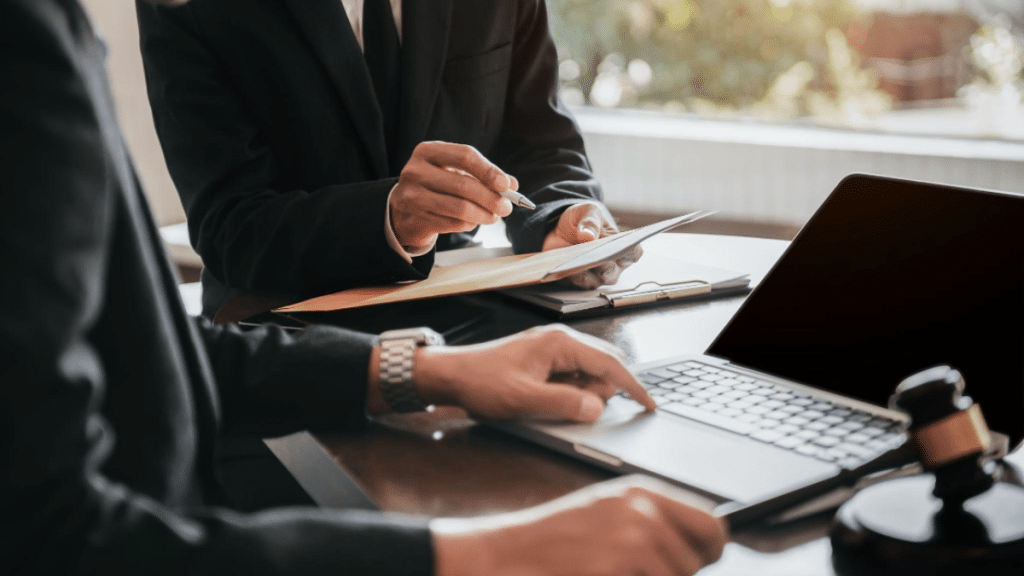Uneven staircases, snowy sidewalks, slippery grocery store floors, and poorly maintained parking lots are all potential locations for slip-and-fall incidents. While some falls just cause minor bruising, some cause more serious injuries, such as spine injuries, fractures, or head trauma. When an accident is caused or exacerbated by a property owner’s negligence, victims in Michigan may seek compensation. However, it’s not always easy to determine fault.
When injuries occur due to a hazardous condition, it is essential to call a Grand Rapids personal injury lawyer as soon as possible. Legal professionals know how to collect evidence, evaluate liability under Michigan’s premises liability laws, and prove that the property owner failed to maintain safe conditions for lawful visitors.
Understanding Michigan’s Premises Liability Framework
The “premises liability” doctrine determines whether a property owner is liable for an accident in slip-and-fall situations. According to Michigan law, guests are divided into three categories: trespassers, licensees, and invitees. Invitees are individuals brought onto the property for business purposes, such as apartment building tenants or store customers. They are entitled to the highest standard of care.
Lawyers must demonstrate that the owner was responsible for the dangerous state, knew and did nothing about it, or should have known via reasonable inspection to establish blame. Winning a claim requires more than just slipping. The legal team must show that the injured party could not have avoided the hazard with reasonable care and that it was harmful and unreasonable.
Preserving Physical and Visual Evidence
Time-sensitive evidence plays a critical role in slip-and-fall cases. A wet floor might be dry within minutes, and a broken stair can be repaired by the next day. Lawyers move quickly to photograph the scene, preserve security footage, and document the condition that caused the fall.
When you call a Grand Rapids personal injury lawyer, they often visit the site themselves or hire investigators. They take note of lighting conditions, warning signs (or lack thereof), maintenance logs, and surveillance cameras. Any visual cue that shows the hazard existed and posed a risk can be key to proving fault.
Obtaining Witness Statements and Incident Reports
Eyewitnesses can confirm that the hazard was present and the victim had no reasonable opportunity to avoid it. These accounts are critical when the property owner disputes the existence or severity of the dangerous condition.
Legal teams also request incident reports from store managers, security personnel, or building supervisors. These documents often contain employee observations, internal notes, and references to prior complaints—information that helps establish the owner’s awareness of the issue. Witness testimony combined with official documentation paints a more complete and credible picture of the incident.
Using Expert Analysis to Demonstrate Liability
In some slip and fall cases, lawyers bring in experts to help prove that the hazard violated safety standards or created an unreasonable risk. Building code specialists, flooring experts, or human factors professionals may be called upon to explain how and why a hazard would predictably cause someone to fall.
For example, an expert might testify that a particular tile material becomes dangerously slippery when wet, and the property owner should have used non-slip mats or warning signs. Others may explain that the slope of a ramp was out of compliance with local safety codes. These opinions add technical authority to a claim and help jurors understand the risks.
Addressing the Open and Obvious Doctrine
One of the biggest challenges in Michigan slip and fall cases is the “open and obvious” defense. Under this rule, property owners are often not liable for hazards that are visible to a reasonable person. For example, a large patch of ice in plain sight might not trigger liability if a court believes the injured person should have seen and avoided it.
Lawyers counter this defense in several ways. They may argue that the hazard, though visible, was effectively unavoidable due to the layout of the property or surrounding conditions. Alternatively, they might show that lighting, distractions, or visual obstructions made the danger less apparent. The key is shifting focus to the property owner’s responsibility for maintaining a safe environment.
Demonstrating Actual or Constructive Knowledge
Attorneys must demonstrate that the property owner knew—or should have known—about the hazardous condition to hold them legally responsible. The owner knows when an employee reports something or a consumer complains. A condition is considered constructive knowledge if it has been present long enough for a reasonable person to have identified and taken action.
Lawyers review maintenance logs, cleaning schedules, and employee training protocols to find lapses in routine safety checks. Inconsistent inspection records or previous complaints about the same hazard can support a claim that the property owner failed to act responsibly.
Showing the Extent of the Injury and Its Effect
Proving fault is only half the battle. Lawyers must also demonstrate that the fall caused significant harm to secure compensation. This requires linking medical records, diagnostic tests, and treatment notes to the incident. Consistent care and early documentation help solidify the injury’s connection to the fall.
Attorneys work with medical providers to create a narrative of recovery that includes long-term effects, limitations, and emotional distress. They also compile wage loss reports and expert assessments to support economic and non-economic damages claims.
Legal Strategy Makes the Difference in Slip and Fall Claims
Slip and fall cases require more than pointing to a puddle or a broken tile. A successful outcome depends on a clear, well-supported statement that the property owner failed in their legal duty and that failure caused actual harm. When you call a Grand Rapids personal injury lawyer, you engage a team that understands the intricacies of Michigan’s premises liability laws and has the tools to overcome defenses, gather compelling evidence, and secure meaningful compensation for those injured due to unsafe conditions.
